I'm studying some models of machine learning and currently optimizing the models : I have to compare these algos on my validation set to select the best one. I use two methods with mlr3 (the code here is an example) :
1)
learner_svm = lrn("classif.svm", type = "C-classification", cost = to_tune(p_dbl(1e-5, 1e5, logscale = TRUE)), gamma = to_tune(p_dbl(1e-5, 1e5, logscale = TRUE)), kernel = to_tune(c("polynomial", "radial")), degree = to_tune(1, 4), predict_type = "prob")
learner_rpart = lrn("classif.rpart", cp = to_tune(0.0001,1), minsplit = to_tune(1, 60), maxdepth = to_tune(1, 30), minbucket = to_tune(1,60), predict_type = "prob")
learner_xgboost = lrn("classif.xgboost", predict_type = "prob", nrounds = to_tune(1, 5000), eta = to_tune(1e-4, 1, logscale = TRUE), subsample = to_tune(0.1,1), max_depth = to_tune(1,15), min_child_weight = to_tune(0, 7), colsample_bytree = to_tune(0,1), colsample_bylevel = to_tune(0,1), lambda = to_tune(1e-3, 1e3, logscale = TRUE), alpha = to_tune(1e-3, 1e3, logscale = TRUE))
learner_kknn = lrn("classif.kknn", predict_type = "prob", k = to_tune(1, 30))
learner_ranger = lrn("classif.ranger", predict_type = "prob", num.trees = to_tune(1, 2000), mtry.ratio = to_tune(0, 1), sample.fraction = to_tune(1e-1, 1), importance = "impurity")
learner_glmnet = lrn("classif.glmnet", predict_type = "prob")
set.seed(1234)
at_xgboost = auto_tuner(
tuner= tnr("random_search"),
learner = learner_xgboost,
resampling = resampling_inner,
measure = msr("classif.auc"),
term_evals = 20,
store_tuning_instance = TRUE,
store_models = TRUE
)
set.seed(1234)
at_ranger = auto_tuner(
tuner= tnr("random_search"),
learner = learner_ranger,
resampling = resampling_inner,
measure = msr("classif.auc"),
term_evals = 20,
store_tuning_instance = TRUE,
store_models = TRUE
)
set.seed(1234)
at_rpart = auto_tuner(
tuner= tnr("random_search"),
learner = learner_rpart,
resampling = resampling_inner,
measure = msr("classif.auc"),
term_evals = 20,
store_tuning_instance = TRUE,
store_models = TRUE
)
set.seed(1234)
at_svm = auto_tuner(
tuner= tnr("random_search"),
learner = learner_svm,
resampling = resampling_inner,
measure = msr("classif.auc"),
term_evals = 20,
store_tuning_instance = TRUE,
store_models = TRUE
)
at_glmnet = auto_tuner(
tuner= tnr("random_search"),
learner = learner_xgboost,
resampling = resampling_inner,
measure = msr("classif.auc"),
term_evals = 20,
store_tuning_instance = TRUE,
store_models = TRUE
)
measures = msrs(c("classif.auc", "classif.bacc", "classif.bbrier"))
learners = c(lrn("classif.featureless"), at_rpart, at_ranger, at_xgboost, at_svm, at_glmnet)
set.seed(1234)
design = benchmark_grid(
tasks = task,
learners = learners,
resamplings = resampling_outer)
bmr = benchmark(design,store_models = TRUE)
results <- bmr$aggregate(measures)
print(results)
archives = extract_inner_tuning_archives(bmr)
inner_learners = map(archives$resample_result, "learners")
To better understand the code : -data = my native normalized dataset. -task = my data with my target : "LesionResponse" -resampling outer = I divide my whole dataset in train (comprising train + validation) and test. -resampling inner = I divide my train into train and validation (for hyper-parameters optimization).
Here I use the auto tuning with an extraction of the results for my validation set in order to compare them. I extract the best results for each learner and put it in a table.
- My second method is the following one :
set.seed(1234)
#Auto tuning elastic net
learner_glmnet = lrn("classif.glmnet", predict_type = "prob")
measure = msr("classif.auc")
rr_glmnet = tune_nested(
tuner = tnr("random_search"),
task = task,
learner = learner_glmnet,
inner_resampling = resampling_inner,
outer_resampling = resampling_outer,
measure = msr("classif.auc"),
term_evals = 20,
store_models = TRUE,
terminator = trm("none")
)
glmnet_results<-extract_inner_tuning_results(rr_glmnet)[, .SD, .SDcols = !c("learner_param_vals", "x_domain")]
set.seed(1234)
#Auto tuning Ranger
learner_ranger = lrn("classif.ranger", predict_type = "prob", num.trees = to_tune(1, 2000), mtry.ratio = to_tune(0, 1), sample.fraction = to_tune(1e-1, 1), importance = "impurity")
rr_ranger = tune_nested(
tuner = tnr("random_search"),
task = task,
learner = learner_ranger,
inner_resampling = resampling_inner,
outer_resampling = resampling_outer,
measure = msr("classif.auc"),
term_evals = 20,
store_models = TRUE,
terminator = trm("none")
)
ranger_results<-extract_inner_tuning_results(rr_ranger)[, .SD, .SDcols = !c("learner_param_vals", "x_domain")]
set.seed(1234)
#Auto tuning knn
learner_kknn = lrn("classif.kknn", predict_type = "prob", k = to_tune(1, 30))
rr_kknn = tune_nested(
tuner = tnr("random_search"),
task = task,
learner = learner_kknn,
inner_resampling = resampling_inner,
outer_resampling = resampling_outer,
measure = msr("classif.auc"),
term_evals = 20,
store_models = TRUE,
terminator = trm("none")
)
kknn_results<-extract_inner_tuning_results(rr_kknn)[, .SD, .SDcols = !c("learner_param_vals", "x_domain")]
set.seed(1234)
#Auto tuning xgboost
learner_xgboost = lrn("classif.xgboost", predict_type = "prob", nrounds = to_tune(1, 5000), eta = to_tune(1e-4, 1, logscale = TRUE), subsample = to_tune(0.1,1), max_depth = to_tune(1,15), min_child_weight = to_tune(0, 7), colsample_bytree = to_tune(0,1), colsample_bylevel = to_tune(0,1), lambda = to_tune(1e-3, 1e3, logscale = TRUE), alpha = to_tune(1e-3, 1e3, logscale = TRUE))
rr_xgboost = tune_nested(
tuner = tnr("random_search"),
task = task,
learner = learner_xgboost,
inner_resampling = resampling_inner,
outer_resampling = resampling_outer,
measure = msr("classif.auc"),
term_evals = 20,
store_models = TRUE,
terminator = trm("none")
)
xgboost_results<-extract_inner_tuning_results(rr_xgboost)[, .SD, .SDcols = !c("learner_param_vals", "x_domain")]
set.seed(1234)
#Auto tuning rpart
learner_rpart = lrn("classif.rpart", cp = to_tune(0.0001,1), minsplit = to_tune(1, 60), maxdepth = to_tune(1, 30), minbucket = to_tune(1,60), predict_type = "prob")
rr_rpart = tune_nested(
tuner = tnr("random_search"),
task = task,
learner = learner_rpart,
inner_resampling = resampling_inner,
outer_resampling = resampling_outer,
measure = msr("classif.auc"),
term_evals = 20,
store_models = TRUE,
terminator = trm("none")
)
rpart_results<-extract_inner_tuning_results(rr_rpart)[, .SD, .SDcols = !c("learner_param_vals", "x_domain")]
set.seed(1234)
#Auto tuning svm
learner_svm = lrn("classif.svm", type = "C-classification", cost = to_tune(p_dbl(1e-5, 1e5, logscale = TRUE)), gamma = to_tune(p_dbl(1e-5, 1e5, logscale = TRUE)), kernel = to_tune(c("polynomial", "radial")), degree = to_tune(1, 4), predict_type = "prob")
rr_svm = tune_nested(
tuner = tnr("random_search"),
task = task,
learner = learner_svm,
inner_resampling = resampling_inner,
outer_resampling = resampling_outer,
measure = msr("classif.auc"),
term_evals = 20,
store_models = TRUE,
terminator = trm("none")
)
svm_results<-extract_inner_tuning_results(rr_svm)[, .SD, .SDcols = !c("learner_param_vals", "x_domain")]
I pick up the results for the inner resampling optimization and put it in a table. Problem : Are these methods giving the same results (I basically do the same things finally...) ? No and I don't understand why... With the first method, I have the wgboost giving me the best results, and for the second one, it is the svm with different auc...
EDIT : Concerning the results obtained, here is two tables, the first one is the results with the first method

And then the results with the second method 
It's a little embarrassing since I must choose the best model to test on my test set
EDIT : Lars gave me the answer, it was all the result of hazard and seed...
Next question is : How to have a confidence interval in this particularly case ??